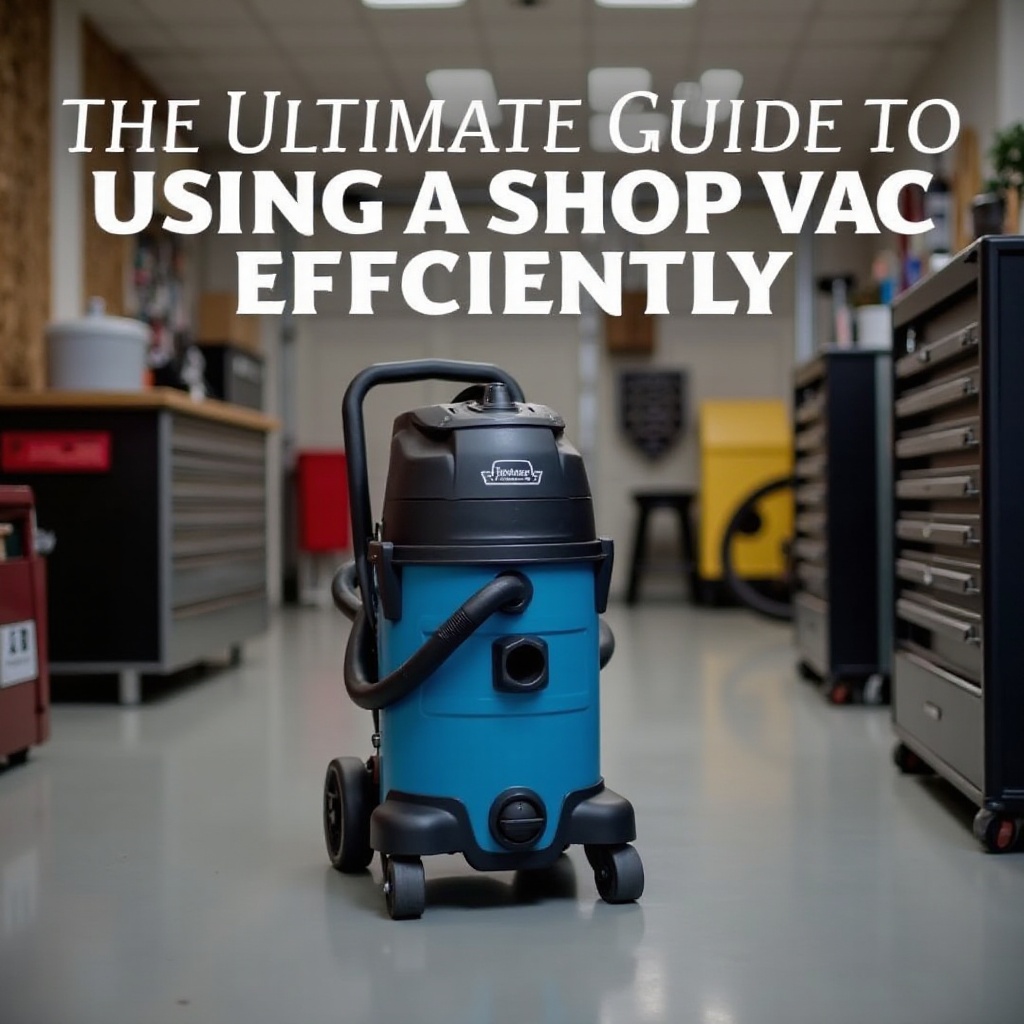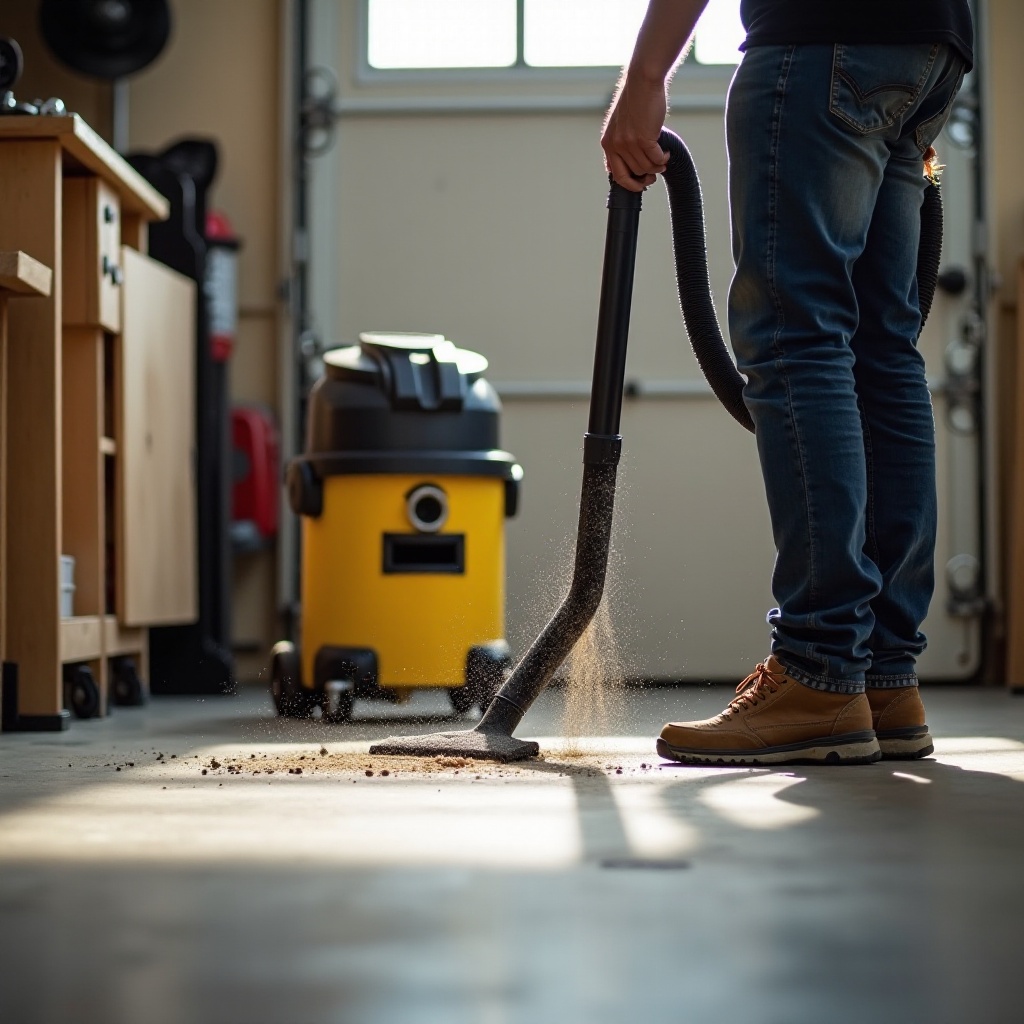Introduction
Access to powerful and versatile tools makes life easier, and a shop vac is one such essential device. Whether you’re dealing with household cleaning, maintaining a workshop, or handling unexpected spills, a shop vac can be your invaluable assistant. This comprehensive guide will walk you through the basics, show you where and how to use it most effectively, and provide maintenance and safety tips to keep your shop vac running smoothly. Let’s dive in, ensuring you harness the full potential of your shop vac.

Understanding Shop Vac Basics
Before diving deep into the usage, it is crucial to understand what a shop vac, or wet/dry vacuum, is. A shop vac is a high-powered vacuum cleaner primarily designed for heavy-duty tasks that typical household vacuum cleaners might struggle with. It is constructed to handle both dry and wet debris, making it versatile for various scenarios.
Shop vacs come in various sizes and capacities, each suited for different requirements. Choosing the right one can significantly affect your cleaning efficiency. The primary components include a powerful motor, a large container for debris collection, and various attachments to cater to different types of tasks. With this fundamental knowledge, you can start to appreciate why a shop vac is a must-have in your cleaning arsenal.
Essential Uses for a Shop Vac
Home Maintenance and Cleaning
A shop vac excels in domestic environments for more than just sweeping dust. It helps remove pet hair, clean garage floors, and even unclog sinks. Thanks to its robust suction power, a shop vac makes short work of tasks that would otherwise require significant manual effort. Use the crevice tool for corners, the brush attachment for delicate surfaces, and the wide nozzle for large floor areas.
Workshop Applications
In workshop settings, a shop vac becomes an indispensable tool. It quickly cleans wood chips, metal shavings, and other debris generated from using power tools. Additionally, a shop vac can replace a traditional dust collection system, keeping your workspace tidy and enhancing the longevity of your tools by preventing buildup.
Water Removal
One of the most significant advantages of a shop vac is its ability to handle wet cleanup tasks. From minor spills to extensive water damage scenarios, a shop vac can efficiently extract water to quickly mitigate damage. Whether it’s draining a clogged sink, drying a flooded basement, or clearing up after a plumbing emergency, the wet-vacuuming feature proves invaluable.
Step-by-Step Guide to Using a Shop Vac
Initial Setup and Assembly
- Unboxing and Inspection: Make sure all parts are included and undamaged.
- Assembly: Install the collection tank, hose, and filters according to the manufacturer’s instructions. Ensure everything is securely fastened.
- Power Connection: Plug in your shop vac to a suitable power outlet. Ensure the cord is undamaged and properly insulated.
Choosing the Right Attachment
- Crevice Tool: Perfect for tight spaces and hard-to-reach corners.
- Brush Nozzle: Ideal for delicate surfaces like curtains or car upholstery.
- Wet Nozzle: Specifically designed for water extraction, ensuring maximum efficiency.
Proper Technique for Vacuuming
- Adjust Setting: Select the wet or dry setting based on the task at hand.
- Manage the Hose: Keep the hose straight to prevent suction loss. Use short, deliberate strokes for maximum efficiency.
- Empty the Tank: Frequently check the collection tank. Empty it before it becomes too full to avoid loss of performance or potential damage.

Maintenance and Troubleshooting Tips
A well-maintained shop vac lasts longer and performs better. Here’s how to maintain your unit efficiently:
- Regular Cleaning: Empty the debris tank after each use. Wipe down the exterior and clean attachments.
- Filter Care: Clean or replace filters regularly, ensuring they are free of blockages.
- Hose Inspection: Check for wear and tear. Ensure there are no clogs or punctures that could affect performance.
- Motor Maintenance: Ensure the motor is free of dust and debris. Occasional professional maintenance can help keep it in top condition.
In case of issues, troubleshoot by checking power connections, ensuring there are no blockages, and inspecting the motor and attachments for functionality. Often, minor issues can be fixed by cleaning or adjusting components.

Safety Tips and Best Practices
Safety should always be a priority when using any electrical device:
- Avoid Flammable Materials: Never vacuum flammable or hazardous materials.
- Use Grounded Outlets: Ensure the shop vac is always plugged into a properly grounded outlet.
- Wear Protective Gear: Use masks and gloves if dealing with dust or wet debris to safeguard your health.
- Proper Storage: Store the shop vac in a dry, cool place. Wrap the cord properly to avoid damage.
Taking these precautions can significantly reduce the risk of accidents and enhance the longevity of your shop vac.
Conclusion
Understanding and efficiently using a shop vac can dramatically improve your cleaning routine, whether at home, in the workshop, or during emergencies. By following the outlined usage, maintenance, and safety tips, you ensure your shop vac remains a reliable and effective tool, ready to tackle any mess. Empower yourself with these strategies and harness the full potential of your shop vac.
Frequently Asked Questions
How do I choose the correct shop vac size?
Consider the capacity, power, and intended usage. Larger tanks and more powerful motors are ideal for extensive use or workshops, while smaller units suffice for typical household cleaning.
Can a shop vac be used for both wet and dry vacuuming?
Yes, a shop vac is designed to handle both wet and dry tasks. Ensure you switch to the correct mode and use appropriate attachments.
How often should I replace the filter?
Replace the filter based on the manufacturer’s recommendations. Typically, this can be every 6 to 12 months, depending on the frequency of use and type of tasks performed.
